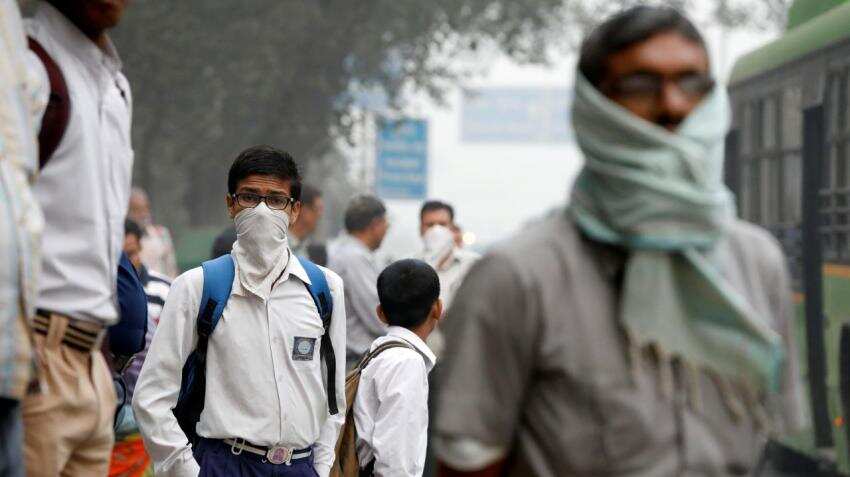Fighting pollution with air purifiers? How you may still be breathing in poison
The World Health Organisation's (WHO) recent report said, "9 out of 10 people in the world are breathing polluted air and approximately 7 million people die daily as a result of household and outdoor air pollution". It is sad to say that this air pollution is just not hurting you outdoors, it is also affecting you at your home and the workplace/office.

Without a doubt, the air quality in our cities has declined over the last decade and this decline has been mapped by the World Health Organisation's (WHO) recent report that says, "India has 14 of the most polluted cities in the world". The report also adds, "9 out of 10 people in the world are breathing polluted air and approximately 7 million people die daily as a result of household and outdoor air pollution". It is sad to say that this air pollution is just not hurting you outdoors, it is also affecting you at your home and the workplace/office. Keeping the same in mind, buying air purifiers for homes and offices/workplaces is on top of most people's to-do list. The hope is that they will get to breath quality air at least inside their homes or workplaces.
But have you ever wondered whether the air purifiers are doing the work that they were purchased for? Are they designed keeping all kinds of weather conditions in mind? How perfect are they for being used in Indian conditions, which are hot and humid?
If not, then we would like to inform you that there is no standard in India that is followed to design air purifiers. Those being sold in India are designed in accordance with the standards of the country of their make. But the good news is that Bureau of Indian Standards (BIS) is planning to introduce an official standard for them that must be adhered to. The bad news is that the gadgets currently available may not be up to the job and you may well be breathing in toxic air. BIS works under the aegis of Ministry of Consumer Affairs, Food & Public Distribution.
BIS sources in an exclusive talk with Zee Business's Suman Agarwal said, "Yes it is true that there is no standard to regulate Air Purifiers in India and it has become a necessity. But, its process is somewhat complicated and high level of technology in them makes it more difficult. However, we have decided to create a team that will work on it." He added, "Even the ISO (International Organization for Standardization) does not have any standard for it".
You will be surprised to know that Kent is the only company that manufacturers Air Purifiers in India. Rest of the air purifiers being sold in India are purchased from countries like China, the US, Japan and Korea and they are designed as per their standards. "We have got the certification of both the US and Europe! Definitely, there are no defined standards in India, but our products are designed by keeping basic parameters in mind. Standards are necessary at least when a number of vendors are functional in India," says Varun Gupta, Director, Kent.
Besides, Klarion technologies also claim that they make different types of purifiers and they are set with different filtration technology. "All air purifiers are imported and labelled here because they are not made in India. These machines are made in accordance with the air quality of those countries and it is difficult to say that how effective they are in Indian conditions. There are no parameters in India, which should be followed while designing them. But, we do a lot of research before designing them," Niren Dabas, Country Head, Klarion Technologies.
US Consumer Report on Air Purifiers published in January 2017 says, only 6 out of 39 big brand air purifiers stood true on the standards. However, the air purifiers being sold in the US are designed on the basis of American National Standard.
On the basis of this report, Consumer Voice of India also published a report on Air Purifiers and defined the basic parameters that should be present in the air purifiers. KC Chaudhary, Technical Department,
Consumer Voice informed about the type of filters that should be used in air purifiers and the parameters that should be followed while manufacturing them. "Purifiers of big brands failed to touch the US standards, but there is no standard in India. When we got a report from the US, we did an assessment on air purifiers being sold in India and prepared a basic structure so that people can understand what must be available in the air purifiers. The basic structure was not based on any tests. We used 12 brands for our survey," said KC Chaudhary, Technical Officer, Consumer Voice.
Watch this Zee Business video
Basic parameters that should be followed while designing Air Purifiers
• It should contain at least 10 filters
• HEPA (high-efficiency particulate air) should be available in every air purifier
• MERV (Minimum efficiency reporting value), a standard, must be followed while designing the purifiers.
• Apart from measuring the PM2.5 particles, the Air Purifier should also possess the ability to identify the pollution particles that are available in the air.
• Active filtration ability should be accompanied by the passive filtration abilities.
Get Latest Business News, Stock Market Updates and Videos; Check your tax outgo through Income Tax Calculator and save money through our Personal Finance coverage. Check Business Breaking News Live on Zee Business Twitter and Facebook. Subscribe on YouTube.
RECOMMENDED STORIES

Home Loan Calculator: How 10% prepayment of Rs 85 lakh, 25-year loan can save Rs 40.23 lakh and 65 months; see calculations

Power of Rs 2,000 Monthly SIP: Can one achieve Rs 3.18 crore corpus by investing Rs 2,000 monthly? If yes, in how many years
07:11 PM IST










 Air purifier makers under lens as NCR air quality worsens; Centre to conduct random checks at outlets & factories
Air purifier makers under lens as NCR air quality worsens; Centre to conduct random checks at outlets & factories Mi Air Purifier 3 Review: Is it the best air purifier to buy in Rs 10,000? Here is your answer!
Mi Air Purifier 3 Review: Is it the best air purifier to buy in Rs 10,000? Here is your answer! How ventilation and air filtration solutions can help in preventing the spread of coronavirus indoors
How ventilation and air filtration solutions can help in preventing the spread of coronavirus indoors Havells air purifier with 9-stage filtration process in India
Havells air purifier with 9-stage filtration process in India Air purifier market to touch USD 39 mn by 2023: Report
Air purifier market to touch USD 39 mn by 2023: Report